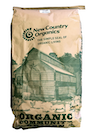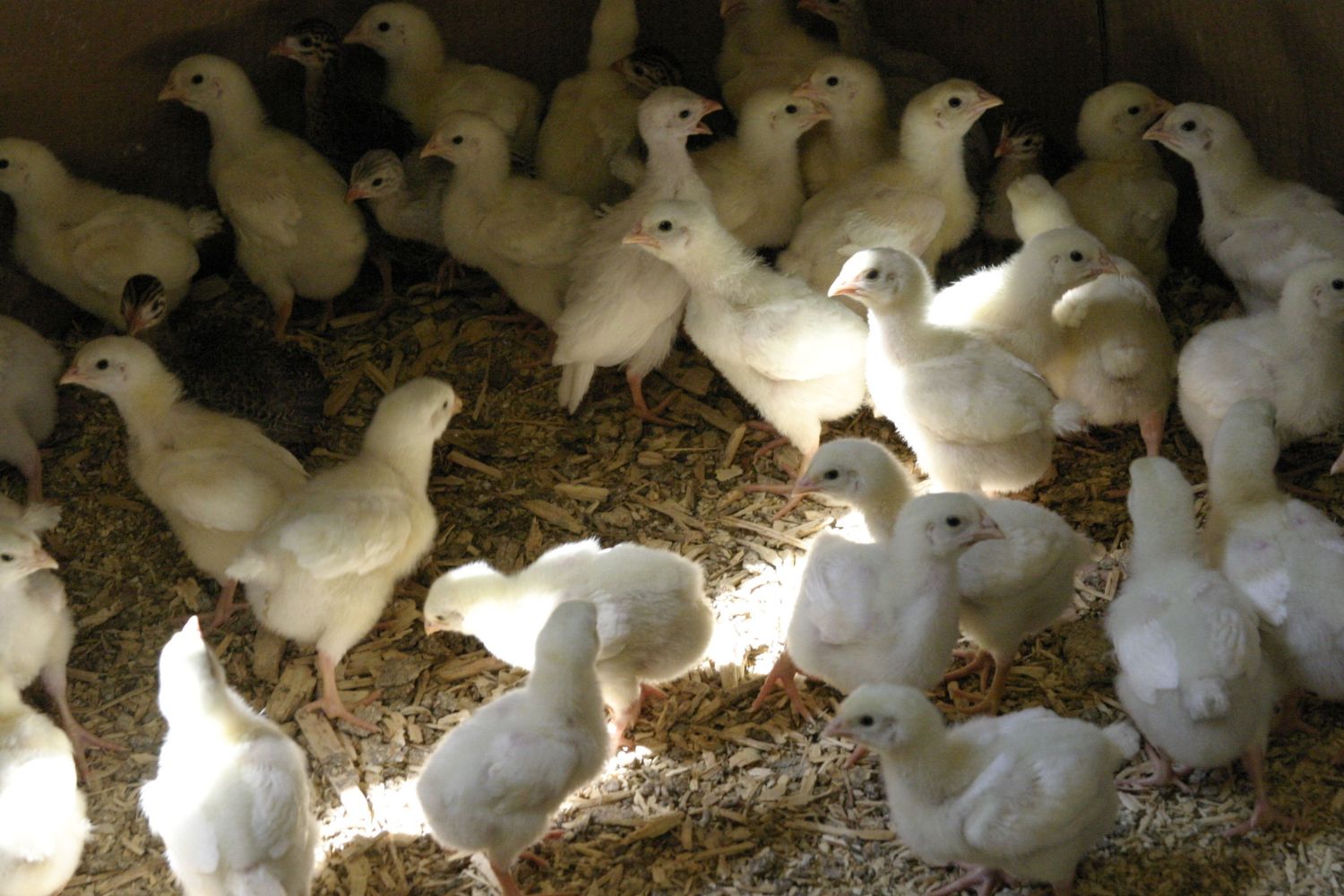What That Carton Label Means: A Grocery Store Guide to Chicken and Egg Buzzwords
We’ve all been there, staring at the wall of eggs in the grocery store with big colorful stickers claiming every different carton is the best. Half the terms sound the same – What on earth is the difference between “free range” and “Cage-free”? Here at New Country Organics, we believe in empowering you to make the best choice for you and your family, so we made you this big list of grocery store buzz-words and what they mean. If you’re having trouble finding one in particular, try pressing the “ctrl” key and “f” key at the same time – it’ll pop out a little search bar for this page.
1. GMO
This stands for “Genetically Modified Organism.” This only means that the organism, whether a plant or animal, has had its DNA – the blueprint for the organism – artificially changed in some way. This could be as simple as a shortcut in cross-breeding such as taking a drought-hardy gene from one strain of corn and putting it into a high producing corn seed, or it could be something as complex such as changing the DNA of a bacterium to allow it to digest toxic waste in superfund sites to clean them up.
2. Non-GMO
This means that a plant or animal has not had its DNA artificially changed. While many non-GMO products are also organic, many still use conventional production methods such as chemical herbicide, pesticide, and fertilizer sprays on crops, radiation treatments, and use of synthetic additives like food colorings in feed.
3. Certified Organic
This means the feed has passed rigorous inspections from a third-party agency to ensure it comes from organic ingredients and/or organic approved ingredients. These include things like calcium carbonate, which comes from rocks and as such isn’t organic but also isn’t chemically derived. Organic feeds must be grown on fields that have not seen synthetic sprays in three or more years, or hydroponic systems without synthetic additives. They have also never been sprayed with synthetic herbicides or pesticides, and must not use genetically modified ingredients. This means less pollution for our air and water, as well as crops conventionally bred to be stronger and hardier in the environments we breed them for. This is one of the only labels on this list that has strict USDA definitions as well – most are highly variable.
*Certified organic meat: A special note must be made here about meat, as the requirements are much stricter than with crops. These animals must only eat certified organic food and never be exposed to antibiotics or additional hormones. The meat itself is not allowed to be treated with any synthetic preservatives or food colorings – what you see is what you get, which is a wonderful thing. Even better, organically raised animals must be raised under welfare guidelines that require things like continual outdoor access. There are a lot of other requirements to raising organic meat that depend on species, but that deserves an article of its own.
4. Pastured or pasture-raised
This method of raising birds can, by far, have the best welfare expectations. The chickens are able to run around on grass, forage, and do all their normal chicken stuff. However, sanitation is a big issue. If these chickens aren’t rotated regularly, they are much more likely to contract diseases than chickens raised indoors because they interact much more with wild birds. That having been said, when done properly with a regular rotation schedule, these birds are the healthiest in the industry thanks to their access to enrichment, reduced interaction with their own waste, and exceptional foraging opportunities.
5. Cage-free
This simply means that the animals are not caged one bird to a pen. Often, this can be as bad for birds as single caging, as the birds may be placed together in warehouse like units where there are too many birds to allow a proper pecking order. This means the chickens become stressed because their place in the hierarchy is always in flux. However, many of these facilities use colony caging, which allows birds to have proper flock sizes to one cage. It does not necessarily mean that they have outdoor access, enough space to move around, or access to other enrichment opportunities, however, though large industries are getting better at making sure their flocks get these things.
6. Free-range or free-roaming
These chickens may still be colony caged, but they generally have a concrete or earth patio to their pen. While this allows them to do more natural behaviors, leading to better quality of life, it also opens them to diseases carried by wild birds. Without proper health protocols and sanitation, and sometimes even with these things, this can lead to flocks of thousands getting sick and having to be euthanized because of one sick bird flying overhead.
*A special note on free-range, free-roaming and cage-free systems: None actually specify how long animals must be allowed to spend in any of these spaces beyond vague statements like “a significant portion of their life,” and are highly variable on actual quality of life. A flat, barren, concrete patio with 500 other birds for five minutes a day is going to be much worse than an indoor space with 40 birds, roosting perches, and straw to play with. There are several welfare certifiers that have varying levels of strictness and efficacy, but none are perfect yet. Out of these, “Animal Welfare Approved” is the best label: they require 1.8 square feet of space per chicken with access to heavy enrichment and continuous outdoor access to 4 square feet per bird with growing vegetation. There are several other statements like “certified humane” that are from other certifiers and have different requirements. A breakdown for these terms and requirements can be found on https://www.humanesociety.org/resources/how-decipher-egg-carton-labels. Ultimately, though, the best way to ensure you’re getting high quality, humanely raised chicken and eggs is to check out your local producers and see for yourself, or to raise your own chickens.
7. Vegetarian- or vegan-fed
This means there are no animal parts in the feed. While this sounds good in theory, keep in mind that chickens are omnivores. They eat bugs all the time, and will eat meat and broken eggs when given the chance, though this may upset their tummies if it’s too much or they’re not used to it. Double check that your feathered friends are getting enough protein when using a vegetarian diet for ease of molting, good growth, and steady egg production.
8. Medicated feed
Medicated feeds are not recommended except in cases of severe illness where a veterinarian might prescribe them to prevent suffering. This is because over time, when they aren’t needed, they make the medications less effective against the disease. When the disease is constantly exposed to the medicine, it allows only those strains strong against the medicine to survive. Vaccines are usually used in cases where someone would otherwise want to use a medicated feed, because they allow a chicken’s immune system to learn about the disease without getting sick with it. After the immune system has learned, it’s then able to naturally fight the disease if the chicken comes across it later.
9. Egg grades
These are determined by freshness, egg shell consistency and color, yolk consistency and color, air cell size, and presence or absence of blood spots. AA is the highest quality and freshest, with A following. B grade eggs are only used for liquid eggs, dried eggs, and baking, usually because the egg shell is too lumpy. Anything less than B isn’t allowed for consumption.
10. Egg color
Shell color is entirely personal preference. Brown, green, and speckled eggs are quite pretty, but the egg inside should look and taste the same regardless of what color you choose. Yolk color and shell quality, on the other hand, often indicate the level of nutrition and care a chicken is receiving. Pale yellow yolks can mean a chicken is either getting too much calcium or not enough variety in their diet. Weak shells can indicate anything from stress to a host of nutritional deficiencies. Chickens who receive healthy, complete nutrition and proper care in their management generally have deep golden or even brilliant orange yolks with strong, thick shells.
11. Terms that are virtually meaningless
-
Natural: All animal products are technically natural, because they came from a living source.
-
Farm fresh: All businesses that sell animal products are classified as farms.
-
Hormone free: Giving hormones to chickens is illegal.
-
Antibiotic free: The waiting period for an animal to stop having a medicine in their body is known as a “wash-out” period, and the USDA is very strict about making sure animals meet the full period so antibiotics are never in your food.
-
No antibiotics ever: This one actually does mean the animal has never received an antibiotic in their life. However, most production systems never see a chicken live long enough to get an illness that can be treated with antibiotics. It’s also worth noting here that if an animal does get sick enough that nothing but an antibiotic will help, farmers, organic or otherwise, are required to give that animal the medicine it needs and keep it in a non-organic flock to prevent suffering.
-
Omega-3 enriched: These are eggs produced by chickens that have been eating feed high in omega-3 oils. Feed ingredients with lots of omega-3s include flax seed, fish meal, and kelp.
-
Pasteurized: The USDA requires all egg products to be pasteurized to reduce the transmission of food-borne illnesses like salmonella.
-
Heritage breed chickens: These chicken breeds have been around since at least 1960, must be naturally bred, must be able to have a long and productive life outdoors, and cannot reach market weight before 16 weeks old, which is slow for a chicken. They also tend to be specially bred for an environment. Because of these reasons, these chickens tend to be healthier than their newer, mass-market companions when in the right environment. However, this doesn’t necessarily mean these chickens do have a better life or higher quality products, only that they usually can. When you see this label, consider checking the farm out – many offer tours and you’ll get to see some really cool chickens!
We hope this guide helped you feel more empowered when you’re staring down that wall of eggs. With all these buzzwords, labels in the grocery store can be confusing even when you’re doing your best to pick through it all. If you’re tired of trying to make sense of it all and are ready to try taking back the food chain, one egg at a time, take a look at our quick-start guide to raising chickens, visit your local library for books on bringing up your own flock, and contact your local extension office for more information.




